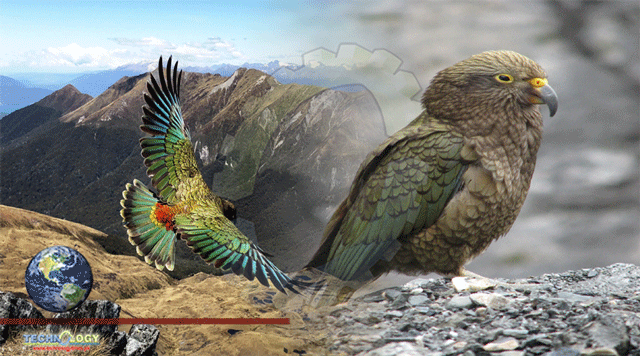A new study published in the journal Scientific Reports provides empirical evidence for deliberate self-care tooling in a species of Kea Parrot bird.

“Most reports of tooling in birds revolve around foraging,” said study lead author Amalia Bastos, a Ph.D. candidate in the School of Psychology at the University of Auckland, and colleagues from the University of Auckland and the ELTE Eötvös Loránd University.
“Among parrots this is more common in captive settings, for example, greater vasa parrots use small stones to scrape or break up shells, which they then ingest, hyacinth macaws use wedges to manipulate nuts, and Goffin’s cockatoos innovate and manufacture stick tools to retrieve out-of-reach food.”
“Despite not habitually using tools in the wild, kea parrots (Nestor notabilis) learn to insert sticks and other objects into traps designed for pest species such as stoats, which allows them to safely access egg bait placed inside.”
“Kea also probe at and set off unbaited traps, an apparently non-functional behavior which may be playful or exploratory in nature.”
“In captivity, kea also readily learn to use stick tools for extractive foraging in experimental settings.”
In the study, the researchers observed a disabled kea named Bruce at Willowbank Wildlife Reserve in Christchurch, New Zealand, who has overcome his disability by using pebbles to preen himself.
“Bruce was found as a juvenile by a researcher at Arthur’s Pass in 2013 with the upper half of his beak missing,” they explained.
“It’s not known exactly how the injury occurred, but it is thought to be the result of an accident with a pest trap.”
“He was brought to the South Island Wildlife Hospital, where he was nursed back to health and now lives in a large aviary at Willowbank Wildlife Reserve.”
“Although keepers ensure that Bruce has access to soft foods which can be eaten without an upper bill, he has also learned to eat harder foods by pressing them up against hard objects.”
“Bruce has adapted well to his injury and can manipulate various objects by holding them between his tongue and lower mandible.”
To establish his behavior was, in fact, intentional tool use, the scientists observed Bruce across nine days.
They recorded instances of him manipulating objects or preening himself and were able to establish five lines of evidence to show that his tool use is intentional.
The first line of evidence the team found was that in over 90% of instances where Bruce picked up a pebble, he then went on to use it to help preen.
Secondly, in 95% of instances where Bruce dropped a pebble, he retrieved or replaced it before continuing to preen.
Third, they also observed Bruce selected pebbles of a specific size that were suitable for preening, rather than randomly sampling pebbles in his environment.
Additionally, from observations of the other 12 kea in the aviary, they also found that no other bird used pebbles while preening, and that when the other individuals did interact with objects, they selected stones of different sizes to those Bruce used.
“Bruce’s tool use highlights the intelligence of this alpine parrot species,” Bastos said.
“Kea do not regularly display tool use in the wild, so to have an individual innovate tool use in response to his disability shows great flexibility in their intelligence. They’re able to adapt and flexibly solve new problems as they emerge.”
This is the first time self-care tool use has been observed in a kea Parrot. It is also the first scientific observation of a kea parrot using a pebble for self-care.
Originally Published By SciNews